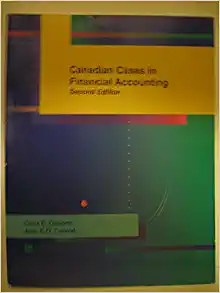Question
Hello. Looking for help with filling out tax forms for an S Corporation. Left my response relating to choosing the S Corporation for further background
Hello. Looking for help with filling out tax forms for an S Corporation. Left my response relating to choosing the S Corporation for further background information, and the directions and data sheet are included below. The tax forms necessary for an S Corporation are Form 1120S, Schedule K-1, and Form 1040. I'll include the IRS links to those forms below.
https://www.irs.gov/businesses/small-businesses-self-employed/s-corporations
Form 1120S: https://www.irs.gov/pub/irs-pdf/f1120s.pdf
Form Schedule K-1: https://www.irs.gov/pub/irs-pdf/f1120ssk.pdf
Form 1040: https://www.irs.gov/pub/irs-pdf/f1040se.pdf
Milestone Directions:
In this milestone, you will submit drafts of completed tax forms for the client described in the final project data sheet. You will submit these forms to support your client recommendations in the final project. Specifically, the following critical elements must be addressed:
A. Prepare the appropriate schedule(s) and tax form(s) for the recommended business entity.
B. Prepare the appropriate pages of Form 1040 including all relevant tax schedules and forms reflecting taxable income based on your calculations and the disposition of assets.
Business Data Sheet:
Client Profile Bob Jones is a 60-year-old single man who has recently retired from IBM. He has $690,000 available in his 401(k) fund, and he is thinking of using that money to open a used car business that will be located at 210 Ocean View Drive in Pensacola, Florida. Bob has estimated that the business might make $300,000 in taxable income. Bob's personal wealthincluding investments in land, stocks, and bondsis about $14,000,000. He reported an interest income of $20,000 and a dividend income of $6,000 last year. The $14,000,000 includes land worth $9,000,000 that Bob bought in 1996 for $450,000. Bob has hired your firm for professional advice regarding whether he should operate as a sole proprietor, a partnership, an S corporation, or a C corporation. He is also considering transferring a possible 40% interest in his new business to his daughter Mandy, who is 23 years old and single.
Other Considerations Bob has offered this info as possible deductions:
Mortgage Interest: $19,250
Charitable Contributions: $22,500
Medical Expenses:
Cosmetic nose job: $3,000
Prescriptions: $1,710
Over-the-counter medicines: $285
Health insurance premiums: $5,800
Doctor visits: $1,140
Medical miles: 499
Real Estate Property Taxes: $8,000
Personal Property Taxes: $3,000
Credit Card Interest for Home Improvements: $1,800
Personal Legal Expenses: $5,000
Contribution to Major Political Party: $2,000
Miscellaneous Deductions:
Tax preparation feed (personal return): $500
Investment expenses: $3,100
You will recommend that Bob either takes a salary of $100,000 or a cash distribution of $180,000.
Assume no federal income taxes will be withheld.
The $300,000 net income already accounts for the salary expense Bob receives and the cash
distribution, where applicable
Additional Data:
Business Tax ID #: 41-0000000
Business Name: Bob Jones Automotive Gallery
Land Purchased: January 2, 1996
Sale Date: September 15, 2018
Personal Tax ID #: 500-00-1004
Personal Address:
1234 Easy Street
Pensacola, FL 32581
Phone: 850-123-4567
Prior Response Choosing an S Corporation:
Business Entity
Hello Mr. Jones. Based on my tax research, I would recommend you incorporate your business as an S Corporation. First and foremost, S Corporations are considered "pass-through" entities, where income, gains, losses, and deductions are passed through to the shareholders, in this case just you, who are taxed just in their individual tax returns (Rupert & Anderson, 2018). Next, S Corporations can have up to 100 shareholders, allowing you to expand in the future (Rupert & Anderson, 2018). According to the IRS, the two main reasons for electing S Corporation status are to avoid double taxation on distributions, and to allow corporate losses to pass through to its owners (S Corporation Stock and Debt Basis, n.d.). Furthermore, shareholders pass-through losses are also limited to their stock and debt basis (Rupert & Anderson, 2018). Lastly, S corporations can "deduct business expenses on their tax returns" that include things like operating costs and healthcare insurance (Howell, n.d.).
Tax Effect
For S Corporations, income, losses and deductions pass through to the shareholders' personal tax return. Charitable contributions, credits, interest on investment indebtedness and short-term and long-term capital gains and losses are all some common separately stated items that get segregated from the computation of ordinary income (Rupert & Anderson, 2018). After removing the separately stated items, the amount remaining is the S Corporation's ordinary income (Rupert & Anderson, 2018). The ordinary income is computed on page 1 of Form 1120S and reports all those items on Schedule K of that return (Rupert & Anderson, 2018). Afterwards, you will prepare Schedule K-1 reporting the S Corporation items, and finally use the Schedule K-1 to prepare individual tax return on Form 1040 (Rupert & Anderson, 2018).
Let me know if you need anything else. Thanks.
Step by Step Solution
There are 3 Steps involved in it
Step: 1

Get Instant Access to Expert-Tailored Solutions
See step-by-step solutions with expert insights and AI powered tools for academic success
Step: 2

Step: 3

Ace Your Homework with AI
Get the answers you need in no time with our AI-driven, step-by-step assistance
Get Started


